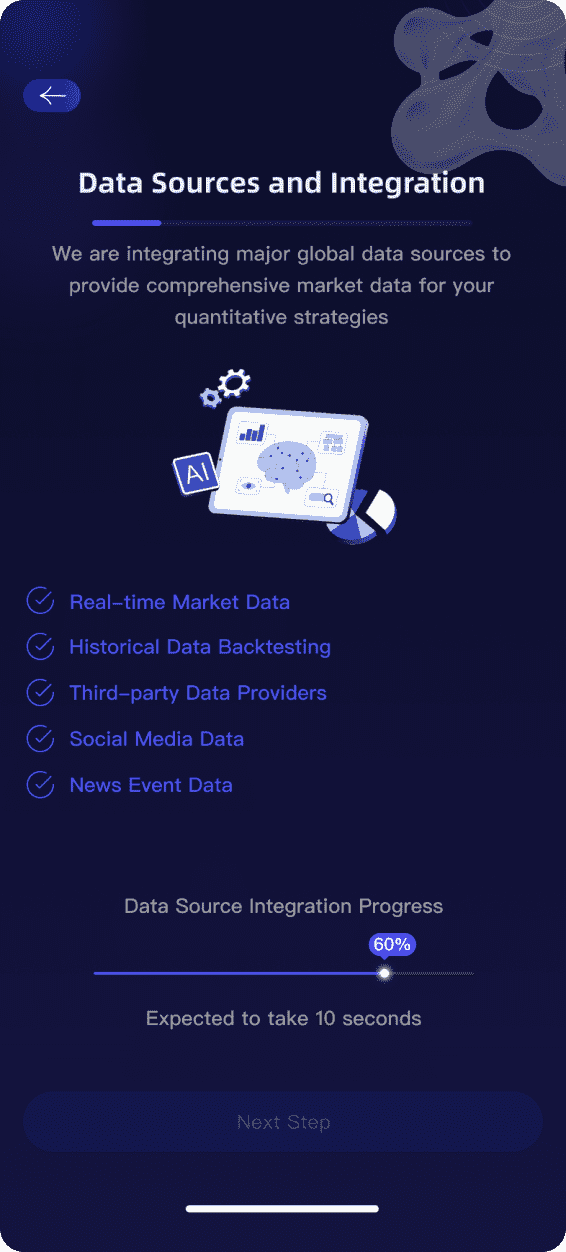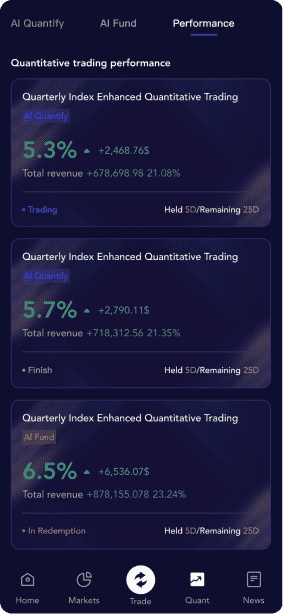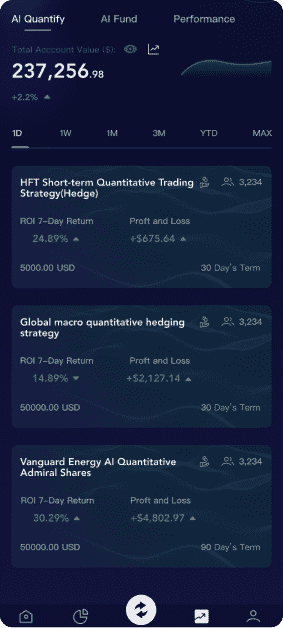
Data Sources and Integration
We are integrating major global data sources to provide comprehensive market data
for your
quantitative strategies

Real-time Market Data

Historical Data Backtesting

Third-party Data Providers

Social Media Data

News Event Data
Quantitative trading performance
The Quarterly Index Enhanced Quantitative Trading strategy combines multiple
advantages,
including high returns, short-term gains, data-driven decision-making, transparency,
professional
management, and diversification benefits. These advantages make it a compelling investment
choice for
investors, allowing it to stand out in the modern investment landscape as an ideal option
for those
seeking
stable and efficient returns.

Impressive Return Rate

High Total Revenue

Third-party Data Providers

Disciplined Investment Approach

Transparency and Monitoring

Advantages of Quantitative Strategies
Quantitative strategies are increasingly favored by investors in modern financial
markets. By
utilizing mathematical models and
statistical methods, quantitative strategies can systematically analyze market data and make investment decisions. Here are some key
advantages of quantitative strategies:
statistical methods, quantitative strategies can systematically analyze market data and make investment decisions. Here are some key
advantages of quantitative strategies:
Data-Driven Decision Making
Quantitative strategies rely on extensive historical data and real-time
market
information to make decisions. This approach can reduce the influence of emotions
and intuition on
investment decisions, thereby enhancing objectivity and reliability.
Efficient Execution
Quantitative strategies can leverage high-frequency trading technology to
execute trades
at extremely high speeds. This efficient execution can capture fleeting market
opportunities, thereby
increasing investment returns.
Risk Management
Through quantitative models, investors can measure and manage risks more
precisely. These
models can monitor market risk factors in real-time, provide risk warnings, and help
investors adjust
their portfolios in a timely manner to avoid potential losses.
Diversification
Quantitative strategies can simultaneously monitor and trade multiple
asset classes and
markets, achieving high portfolio diversification. This diversification can
effectively reduce the
impact of fluctuations in a single asset or market on the overall portfolio.
Backtesting and Optimization
Quantitative strategies can undergo historical backtesting before
implementation to
evaluate their performance under different market conditions. Through backtesting,
investors can
optimize strategy parameters, enhancing the strategy's effectiveness and
adaptability.
Quantitative strategies combine advanced
mathematical and
statistical methods to
significantly
enhance the scientific and predictable nature of investments through data-driven decisions,
precise risk
management, efficient execution, diversified portfolios, consistent strategy execution,
historical
backtesting and optimization, and high automation. In the highly competitive financial markets,
quantitative
strategies provide investors with powerful tools to achieve higher investment returns and more
stable
performance.










